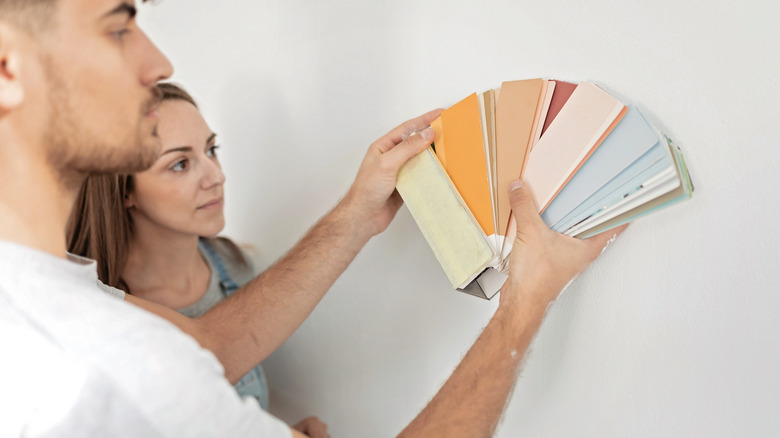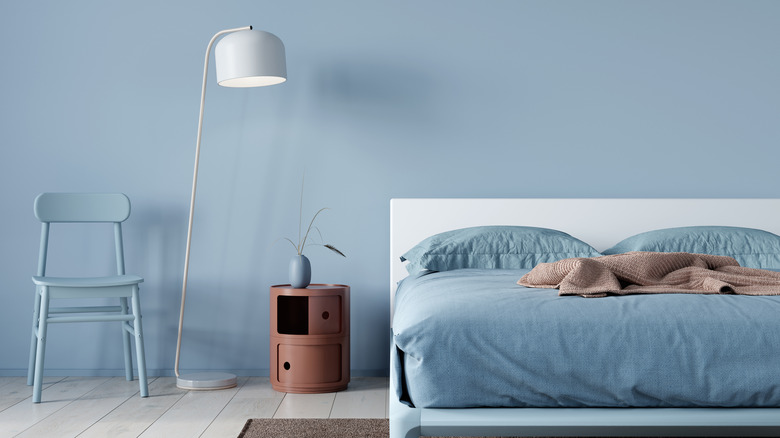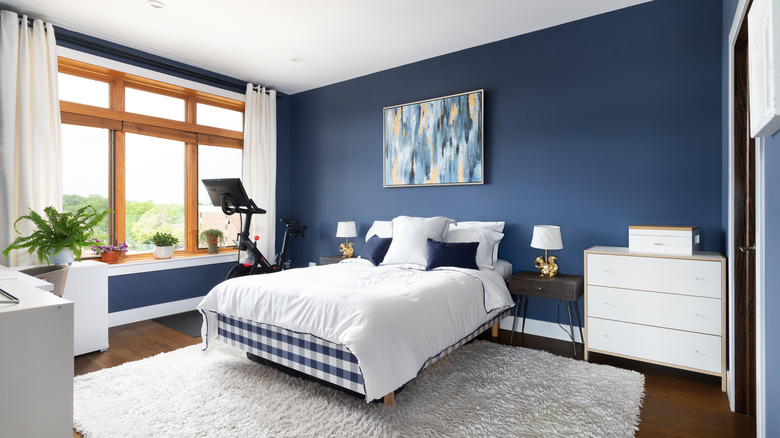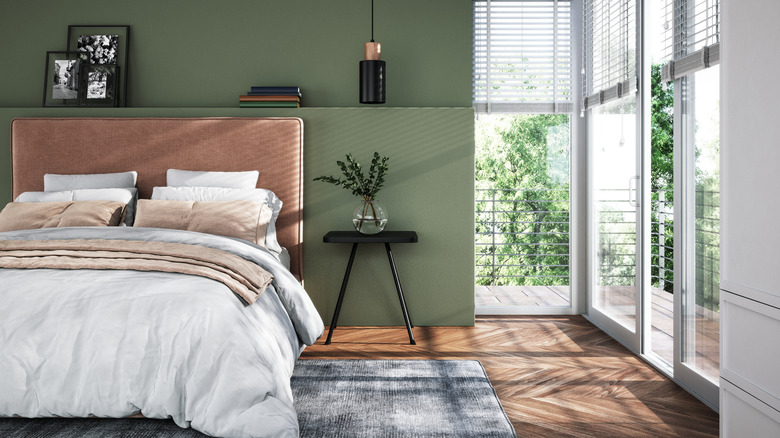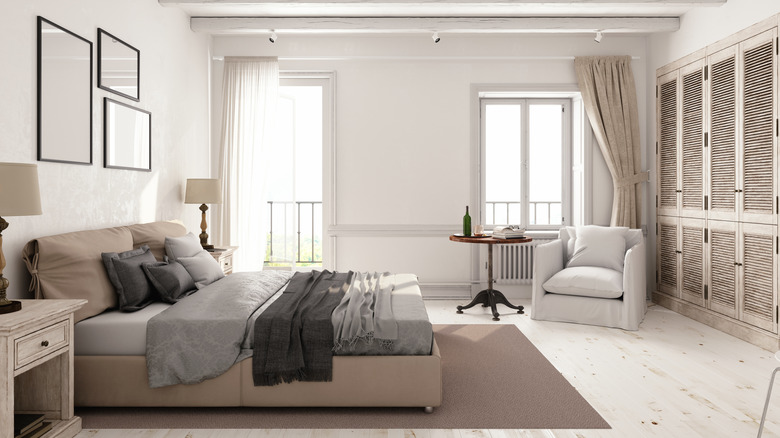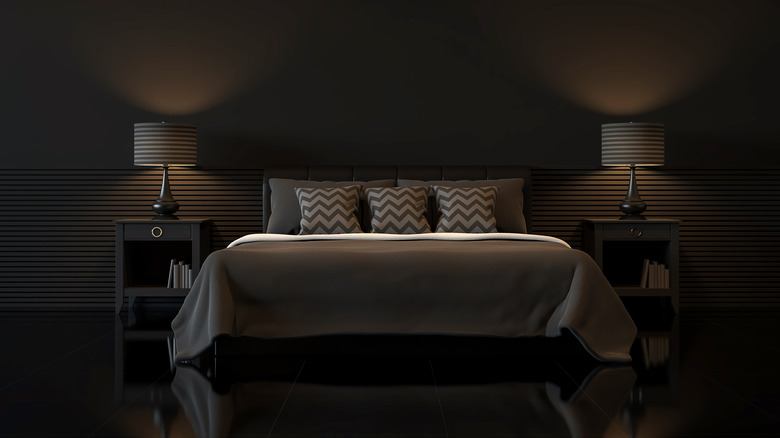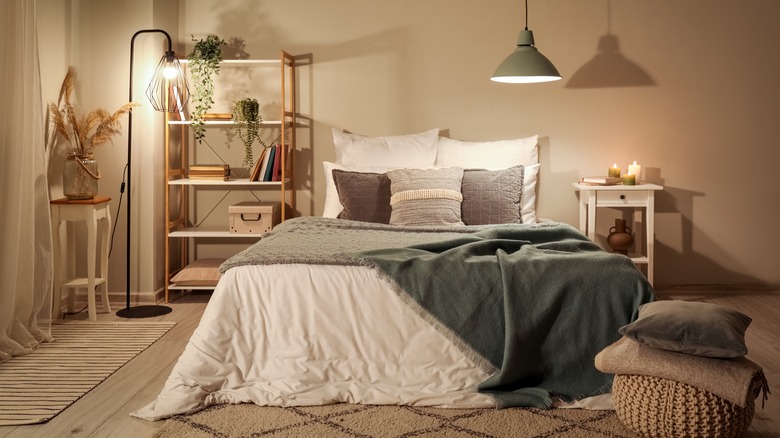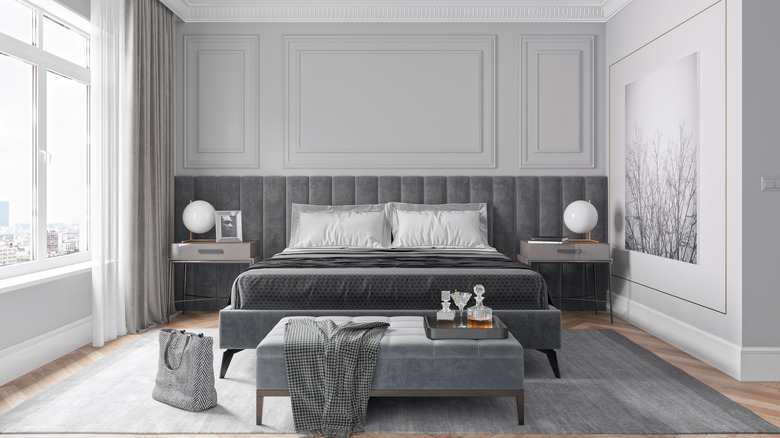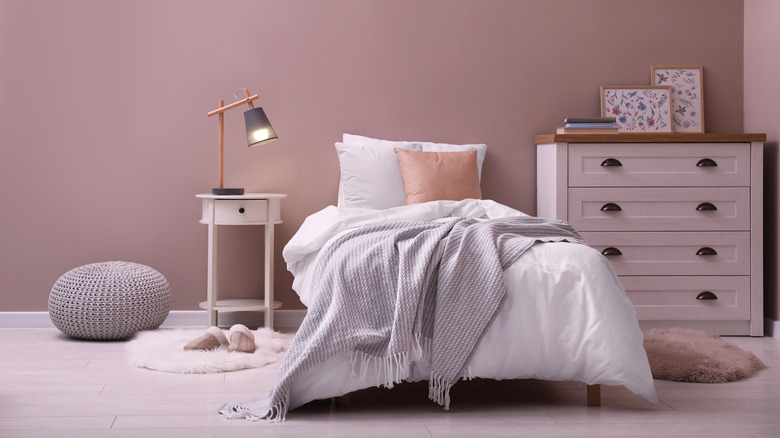The 8 Best Bedroom Paint Colors To Create A Peaceful Environment
When you're planning on redoing your bedroom, there are plenty of decisions you have to make, from choosing a comfortable mattress to what pieces of art will best complement the space. All of these choices can leave you feeling a bit overwhelmed, but there's a secret weapon you can pull out to ensure you create an environment that's cozy and will allow you to get the best sleep possible: science. Rather than simply relying solely on your personal tastes, consider dipping your toes into the world of color psychology to determine the ideal palette for your bedroom.
According to a study published in Frontiers in Psychology, there is a long history of research diving into the relationship between color and mood. The findings of this research are frequently applied in fields like graphic and interior design, but you don't have to be an expert to enjoy the benefits in your own home. Sleep is absolutely essential to our daily functioning, and the quality of the rest we get can directly impact just about every aspect of our lives, from how well we perform at work to our long-term mental health. Investing in a high-quality mattress, cozy bedding, and blackout curtains so you can sleep in peace can make a major difference in your sleep quality, but it's also important that the design of your room — color included — gives you the chance to relax and wind down before you turn off the lights.
1. Light blue
Blue has a reputation for being a calming, cool, and soothing color, so it's no surprise that this hue is a great choice for your bedroom walls. According to a study published in Color Research and Application, students studying in a room that was painted a light-colored hue were more relaxed and pleasant, and blue-painted rooms helped to lower heart rate and promote calmness. A light blue shade on your walls is the perfect way to test out the color without going too bold — and it's one of the easiest shades to build a cohesive palette around.
2. Navy blue
Based on data from the same study, we could assume that deeper blue hues could promote relaxation in your bedroom. Going for a darker color like navy might feel like a bold choice for your bedroom walls, but it's one of the most timeless options out there, and pairs well with just about any other accents you might have in mind. If you're worried about your room feeling too dark with a full coat of navy blue paint, consider using it on an accent wall or trying out the two-toned wall trend in your home for more balance.
3. Green
If you want to bring more color to your bedroom but you'd rather stay on the warmer side of the spectrum, green is the choice for you. Unfortunately, according to The Annual International Conference of the IEEE Engineering in Medicine and Biology Society, many warmer color choices like red and yellow tend to cause feelings of alertness and increased brain activity — great for the office or playroom, but not when you're trying to wind down at the end of the day. Green is a safer bet, especially if you stick with more muted shades like sage, mint, or celadon.
4. White
White is one of the most classic wall colors out there. It's a great choice if you want your room to feel airy and bright, and it's completely neutral so you can easily change up your decor. It's also one of the colors with the least effect on brain activity, so it won't make you feel awake or alert when you're trying to rest. With that being said, however, true white paint can feel somewhat harsh in a bedroom, so it's best to opt for something with a slight undertone for more coziness, such as cream, pearl, or ivory.
5. Black
In an interior design world where natural light reigns king, it can feel taboo to paint your bedroom black. If you're on the hunt for a color that will help to maximize the effect your blackout curtains have on your space, however, this is the perfect choice. Black reflects less light than any other color on the spectrum, so it can help to ensure you're still catching Zs well after the sun rises. As a neutral color like white, it also won't stimulate your brain activity as much as other colors.
6. Beige
Beige is another classic paint color known for its flexibility and neutrality. It's associated with warmth and calmness, but it's also frequently seen as the dull or safe choice. While this may be true for the other rooms of your home, boring and calm is a fantastic background to promote a night of restful sleep. Despite its "boring" associations, there are choices available that can provide a more interesting twist on what you've come to expect from the color. If the standard beige options aren't sparking your interest, consider shades with more unique undertones, like pink or green.
7. Gray
Similar to beige, gray often carries associations of dullness or blandness, but if you're looking for a place where you can shut your mind off at the end of the day, a lack of bright stimuli might just be what you need. Because it's so neutral, gray can work well with both brighter accents and other neutral colors, so it's an easy base if you're looking to build a cohesive color scheme. If you're still feeling like it's lackluster, consider bringing it more texture and different shades of the same color to create a look that's visually interesting.
8. Light pink
Bright pink is a bold, energizing, and invigorating color, but, as it turns out, pastel and muted options can invoke feelings of peace and tranquility. Light blush and rose shades, especially those with a more brown or gray undertone, can make for a great and often unexpected paint color choice for a bedroom. As an added bonus, this color is surprisingly flexible and can pair well with many of the other soothing color options on this list. Blush and navy contrast each other beautifully, while gray and beige can pair well with the undertones in more muted pinks.
